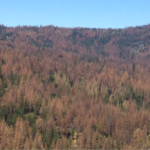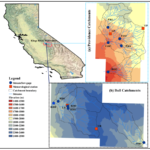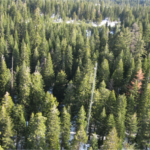
Month: January 2017
Agriculture
Forest & Water
Watershed Connections: Forest Health and Its Impacts Downstream
Mountain forests are more than a pretty place, more than tall trees and expansive meadows, more than a destination for winter snow play and summer river splashing.
The forest provides hundreds of natural services, upon which we all depend. More than 50% of California’s water supply comes from rivers that begin in the Sierra Nevada.
Persistent drought, past forest management strategies, federal budget decisions, air pollution, and climate change are impacting the health and function of the ...
More
Groundwater and Surface Water Interactions……

Abstract
Groundwater and surface water interaction is an essential component of the hydrological cycle. The hydraulic connectivity and exchange of water between surface water (e.g. rivers, lakes, wetlands) and underlying aquifers provide many ecosystem services that sustain human and ecological well-being. Climate change, increased population, and industrial growth have resulted in substantial environmental (e.g. land use and land cover, climate, groundwater) changes across the globe. As a resu...
More
Testing the recent snow drought as an analog for climate warming……

Abstract
Record low snowpack conditions were observed at Snow Telemetry stations in the Cascades Mountains, USA during the winters of 2014 and 2015. We tested the hypothesis that these winters are analogs for the temperature sensitivity of Cascades snowpacks. In the Oregon Cascades, the 2014 and 2015 winter air temperature anomalies were approximately +2 °C and +4 °C above the climatological mean. We used a spatially distributed snowpack energy balance model to simulate the sensitivity of m...
More
Characterizing Runoff and Water Yield…………

ABSTRACT: In a Mediterranean climate where much of the precipitation falls during winter, snowpacks serve as the primary source of dry season runoff. Increased warming has led to significant changes in hydrology of the western United States. An important question in this context is how to best manage forested catchments for water and other ecosystem services? Answering this basic question requires detailed understanding of hydrologic functioning of these catchments. Here, we depict the differenc...
More
Linking Hydroclimate to Fish Phenology……

Abstract
Streamflow and water temperature (hydroclimate) influence the life histories of aquatic biota. The relationship between streamflow and temperature varies with climate, hydrogeomorphic setting, and season. Life histories of native fishes reflect, in part, their adaptation to regional hydroclimate (flow and water temperature), local habitats, and natural disturbance regimes, all of which may be affected by water management. Alterations to natural hydroclimates, such as those caused by ri...
More
Sierra Nevada Snow Won’t End California’s Thirst
YOSEMITE NATIONAL PARK, Calif. — Thanks in part to El Niño, snowpack in the Sierra Nevada is greater than it has been in years. With the winter snowfall season winding down, California officials said that the pack peaked two weeks ago at 87 percent of the long-term average.
That’s far better than last year, when it was just 5 percent of normal and Gov. Jerry Brown announced restrictions on water use after four years of severe drought. But the drought is still far from over, especially in Southe...
More


